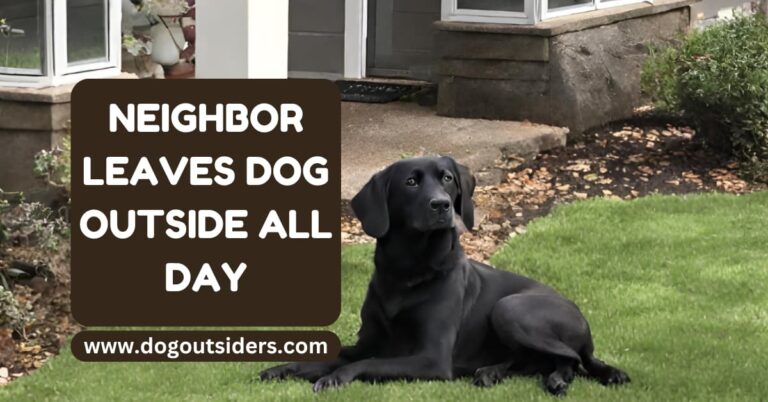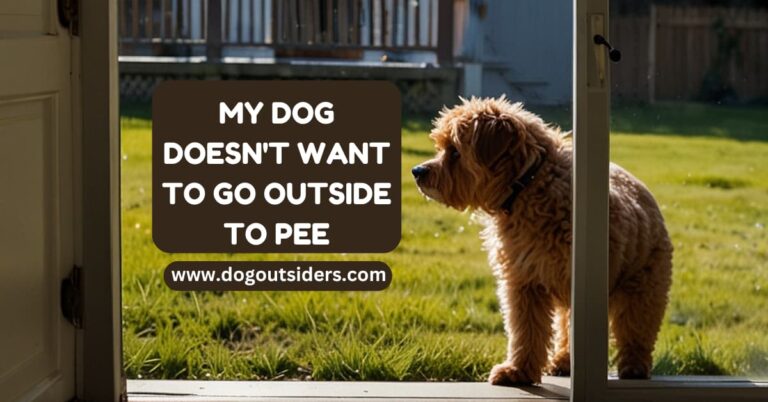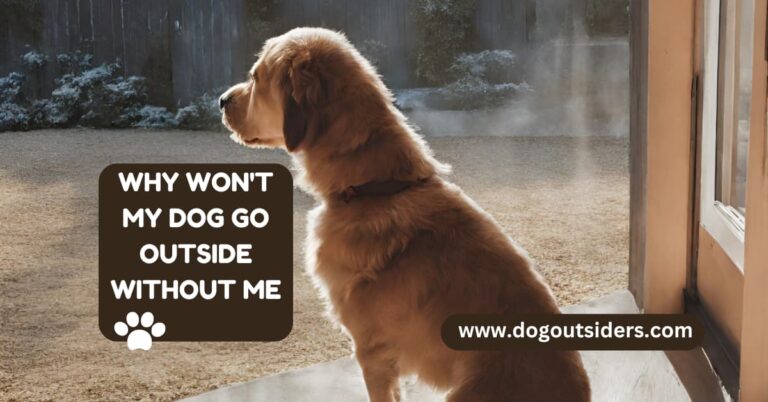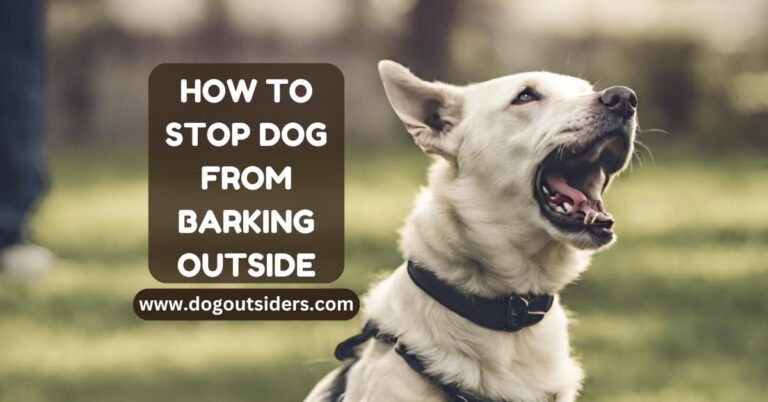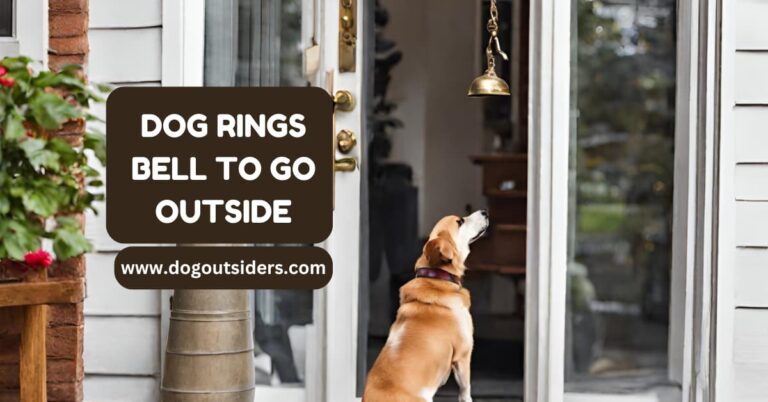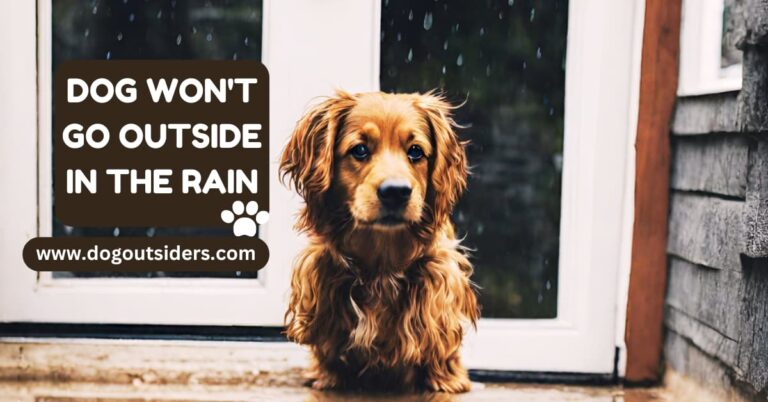When I first got my dog, taking him outside to do his business was a breeze. However, recently, my dog won’t go to the bathroom outside anymore. It’s like he has forgotten all his training overnight. The frustrating part is that he used to be so good about it. Now, it’s a constant battle trying to get him outside, out the door. I’ve tried everything from changing his routine to rewarding him with treats, but nothing seems to work. It’s a stark contrast from how things used to be in times past, and I’m determined to figure out what’s causing this sudden change in behavior.
Key Takeaways
- Understanding Your Dog’s Behavior: Recognize your dog’s cues and patterns to anticipate their needs and prevent accidents.
- Basic Potty Training Strategies: Consistency, positive reinforcement, and a regular schedule are key elements in successful potty training.
- Training Tips for Stubborn Dogs: Patience, persistence, and using high-value treats can help motivate stubborn dogs during training sessions.
- Benefits of Consistent Outdoor Training: Regular outdoor bathroom breaks reinforce good habits and strengthen the bond between you and your dog.
- When to Seek Professional Help: If your dog’s potty issues persist despite your efforts, consider consulting a professional trainer or veterinarian for guidance.
- Maintaining Potty Training Success: Stay vigilant, continue positive reinforcement, and adapt training methods as needed to ensure long-term success.
Understanding Your Dog’s Behavior
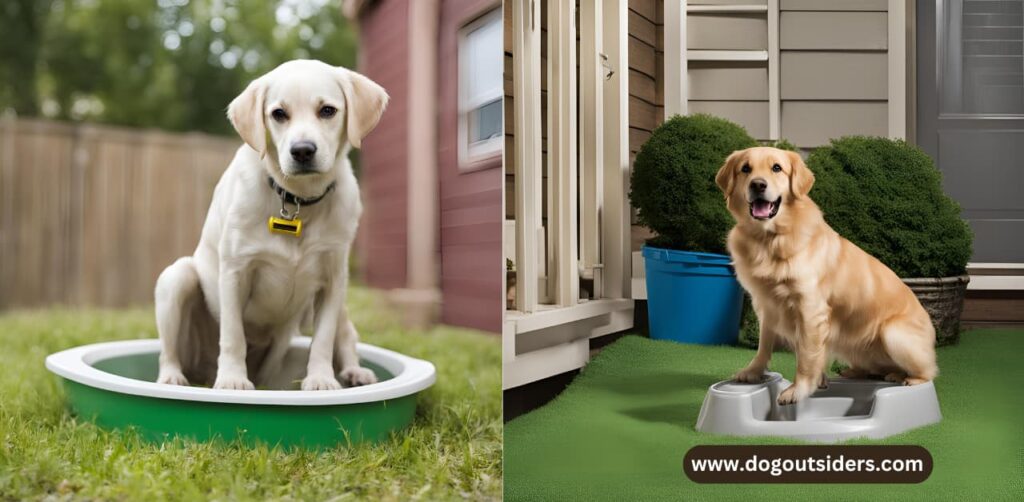
Body Language
Observe your dog closely for potty cues such as sniffing the ground or circling a spot. Dogs often exhibit specific behaviors before relieving themselves, signaling their need to go pee or poop. By paying attention to these cues, you can anticipate when your dog needs to potty.
Changes in Behavior
If your furry friend suddenly refuses to go outside to pee or poop, it could indicate an underlying issue. Recognize any changes in behavior, like whining or pacing near the door, which may suggest discomfort with outdoor pottying. Consulting a vet is crucial to rule out any health concerns causing this change.
Consistency is Key
Consistency plays a vital role in reinforcing good potty habits in dogs. Establish a routine for walks and bathroom breaks to help your dog understand when and where they should potty. Using the same leash and taking them to the same spot each time can strengthen their natural instinct to relieve themselves outdoors.
Basic Potty Training Strategies
Establish Routine
Establishing a regular potty schedule is crucial to help your dog adapt to going outside. Dogs thrive on routine, so consistency is key. Take your dog outside at the same times each day, especially after meals and playtime to try and pee.
Creating a predictable routine will help your dog anticipate when it’s time to go outside. Consistency reinforces positive behavior and makes it easier for your furry friend to understand where they should eliminate outside. Remember, patience is essential during this training process.
Positive Reinforcement
Using positive reinforcement techniques such as treats and praise can be highly effective in encouraging your dog to go potty outside. When your dog successfully eliminates outside, immediately reward them with treats and enthusiastic praise.
Rewards create a positive association with outdoor potty trips, motivating your dog to repeat the behavior. Verbal cues like “go potty” can help signal to your dog what you expect from them to pee. Remember, patience and consistency are key in reinforcing good habits.
Designated Potty Area
Creating a designated potty area outside can help guide your dog’s elimination behavior. This area should be easily accessible and away from high-traffic spots in your yard. Consider using visual markers like a fire hydrant or small fence to define the space.
Addressing Puppy Potty Issues
Crate Training
Using crate training can help prevent accidents indoors by creating a den-like environment for your puppy to pee outside. Dogs naturally avoid soiling their living spaces, making the crate an effective tool.
Crate training involves gradually acclimating your puppy to the crate by making it a positive space with treats and toys. Avoid using the crate as a form of punishment to maintain its positive association.
Remember to take your puppy outside immediately after they leave the crate to reinforce outdoor potty habits. Consistency is key in successful crate training.
Porch Potty Solution
Introducing a Porch Potty can provide a convenient indoor potty solution for puppies, especially in situations where going outside is challenging to pee. The Porch Potty simulates an outdoor environment for potty training purposes.
The Porch Potty typically consists of synthetic grass or real grass on top of a drainage system that removes urine effectively. This setup helps puppies differentiate between indoor and outdoor potty areas to pee.
I found that placing the Porch Potty in a consistent location outside within the house helped my puppy establish a routine quickly, leading to fewer accidents indoors.
Scenting Fire Hydrant
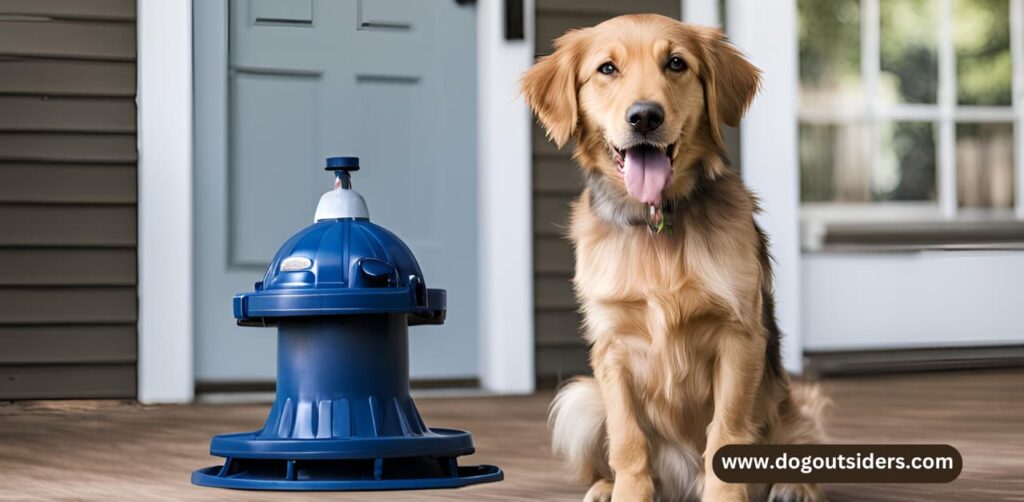
Utilizing the scenting fire hydrant feature on the Porch Potty can aid in training young dogs to pee outside in the designated potty spot. The scent mimics that of a real fire hydrant, encouraging dogs to eliminate outside in that specific area.
The fire hydrant scent acts as a natural attractant for dogs, guiding them outside towards the appropriate place to relieve themselves. This feature can be particularly helpful for puppies who are still learning where to go potty, pee outside.
Training Tips for Stubborn Dogs
Patience and Consistency
Training a stubborn dog requires patience and consistency. Establish a routine for potty breaks, rewarding successful outdoor bathroom trips with treats.
When facing resistance, avoid punishment and instead reinforce positive behavior by praising and rewarding the desired actions.
Consider using real grass or training sod on the Porch Potty if your dog is resistant to synthetic grass and pee outside. Some dogs may prefer the feel of real grass under their paws when they pee outside.
Professional Guidance
If traditional training methods prove ineffective, it’s advisable to seek professional guidance from a dog trainer. A qualified trainer can assess your dog’s behavior and provide tailored solutions.
A dog trainer can offer expert advice on alternative training techniques and strategies to address your pet’s reluctance to go outside.
Remember, every dog is unique, so what works for one may not work for another. Customizing your approach based on your dog’s preferences is key to successful training.
Benefits of Consistent Outdoor Training
Physical Activity
Encouraging your dog to potty outside promotes physical activity and helps maintain their overall health. Regular outdoor breaks contribute to exercise and playtime.
Spending time in a fenced yard or on walks not only aids in bathroom training but also allows your dog to explore the surroundings, stimulating their senses.
Bond Strengthening
Outdoor potty training sessions outside provide an excellent opportunity to bond with your furry companion. The shared experience of exploring the backyard or going for a walk can deepen the connection between you and your dog.
Engaging in outdoor activities together creates positive associations with pottying outside, making it a rewarding experience for both you and your pet.
Clean Living Environment
By consistently encouraging your dog to go to the bathroom outside, you can significantly reduce indoor accidents and maintain a clean living environment. Outdoor pottying outside helps establish a routine for your pet, minimizing accidents indoors.
Regular outdoor training also prevents odors and messes outside, promoting a hygienic living space for both you and your furry friend.
When to Seek Professional Help
Signs of Anxiety
If your dog consistently refuses to go to the bathroom outside despite regular training, it might indicate underlying separation anxiety or fear issues. These behaviors can be challenging to address outside without professional help.
Consultation with Experts
Consulting a certified dog trainer or behaviorist is crucial when facing persistent potty problems. These professionals can provide personalized advice tailored to your dog’s specific needs and behavioral patterns.
Seeking guidance from experts is essential if your dog’s refusal to go outside persists for an extended period, as it could be linked to neurological issues or medical conditions. Professional trainers can assess the situation comprehensively and offer effective solutions.
Customized Training Programs
Professional training programs offer structured approaches to tackle intricate potty training challenges. They can create specialized plans based on your dog’s unique behaviors, ensuring a targeted and effective resolution.
Consider enrolling in specialized training sessions that focus on addressing outdoor pottying issues specifically. These programs are designed to cater to dogs with varying levels of difficulty in adapting to outdoor bathroom routines.
Exploring Alternative Solutions
Using TURFtastic
Consider trying TURFtastic to address any lingering odors and maintain a fresh Porch Potty. This product effectively eliminates smells, creating a more pleasant outdoor bathroom environment for your pet. By incorporating TURFtastic, you can tackle odor issues effortlessly.
Transitioning from Disposable Pee Pads
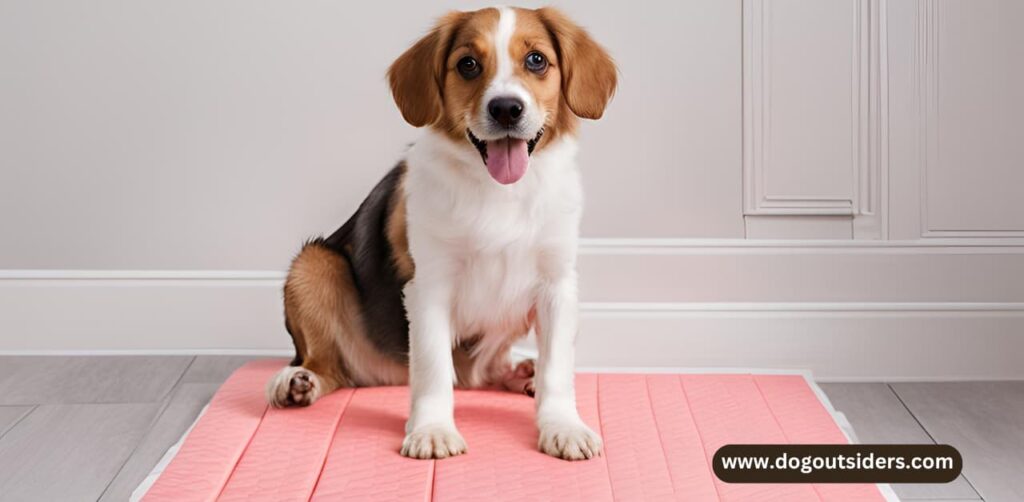
Switching from disposable pee pads to the eco-friendly Porch Potty offers a sustainable solution in the long run. These pads are not only environmentally friendly but also provide a consistent bathroom space for your pet. Making this change can significantly reduce waste and promote eco-conscious habits.
Upgrading to Porch Potty Premium
Explore the benefits of upgrading to the Porch Potty Premium model for advanced self-cleaning features. This model offers improved convenience by automatically rinsing itself after each use. With the Porch Potty Premium, maintaining a clean bathroom space becomes much easier outside.
While troubleshooting bathroom issues with your dog outside, it’s essential to consider various options available in the market. Trying out different models and products can help pinpoint what works best for your pet’s needs. Providing extra help such as using treats or creating a designated bathroom area can encourage better bathroom behavior.
Maintaining Potty Training Success
Clean and Maintain
Regularly clean and maintain the Porch Potty to prevent odors and ensure a hygienic potty environment. This practice not only keeps the area sanitary but also helps in reinforcing the outdoor potty training routine. By eliminating any lingering smells, you create a more inviting space for your dog to continue their bathroom breaks outside.
Refresh Grass

Refresh the Porch Potty with real grass or high-quality synthetic grass to keep it appealing to your dog. Fresh grass can entice your pet to use the designated spot for their poops and urine, reducing the chances of accidents inside the house. A clean and attractive potty area encourages your furry friend to maintain good habits.
Celebrate Milestones
Celebrate milestones in your dog’s potty training journey to reinforce positive behavior and encourage continued success. Offering rewards such as treats or extra playtime can motivate your pet to consistently go potty outside. Positive reinforcement goes a long way in solidifying the outdoor potty training progress you’ve made.
Conclusion:
After diving into the intricacies of potty training your furry friend, one thing is crystal clear: consistency is key. Understanding your dog’s behavior and implementing basic training strategies are fundamental steps in addressing potty issues effectively. Remember, patience and positive reinforcement go a long way in this journey. Seeking professional help when needed and exploring alternative solutions can save you time and frustration.
Maintaining success in potty training requires dedication and a deep understanding of your dog’s needs. By staying proactive, patient, and consistent, you pave the way for a harmonious coexistence with your four-legged companion. So, gear up, stay persistent, and watch as your dog masters the art of outdoor potty breaks effortlessly.
FAQ’s:
Dogs may refuse to go outside due to fear, health issues, or past negative experiences. Monitor for signs of distress or discomfort, consult a vet for health concerns, and consider any recent changes in the environment that could be causing stress.
Establish a consistent routine, reward desired behavior, supervise closely, and use positive reinforcement techniques. Take your dog outside frequently, especially after meals or waking up. Clean indoor accidents thoroughly to remove scent markers.
Puppies have small bladders and need frequent bathroom breaks. Be patient and consistent with training, supervise closely indoors, and provide ample opportunities for outdoor elimination. Use crate training to prevent accidents when unsupervised.
For stubborn dogs, patience and positive reinforcement are key. Identify motivators like treats or toys, establish a clear routine, and praise heavily for outdoor success. Avoid punishment for accidents as it can create anxiety around elimination.
If your efforts aren’t yielding progress or if your dog shows signs of distress or aversion to going outside, it may be time to consult a professional trainer or behaviorist. They can assess the situation comprehensively and provide tailored solutions for your specific challenges.

